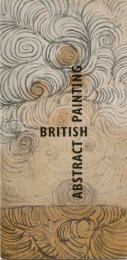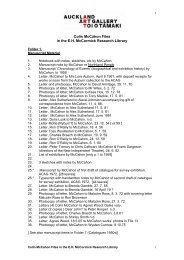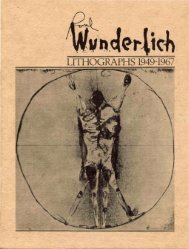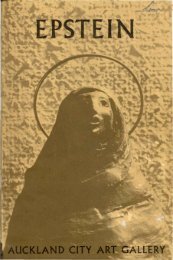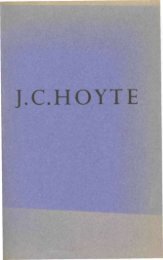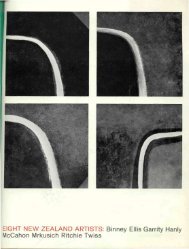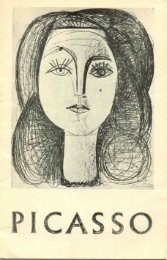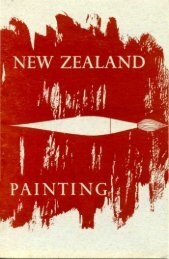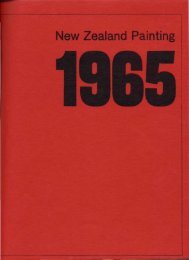Frances Hodgkins: Leitmotif - Auckland Art Gallery
Frances Hodgkins: Leitmotif - Auckland Art Gallery
Frances Hodgkins: Leitmotif - Auckland Art Gallery
Create successful ePaper yourself
Turn your PDF publications into a flip-book with our unique Google optimized e-Paper software.
4frances hodgkinsleitmotifleitmotif: historically, a recurring short melodic phrase usedespecially in wagnerian music dramas, to suggest a character,thing etc; an often-repeated image or theme in a literary workfrances hodgkins in the village of corfe castle 1945 (detail from a photograph in the exhibition)felix h man collection, alexander turnbull library, 35mm-00337-c.Particular motifs appear repeatedly within the work of <strong>Frances</strong><strong>Hodgkins</strong> (1869–1947). Landscape, still life and portraiture arecentral to her oeuvre, but she treats each genre as if they are threadsin a tapestry, weaving and interweaving them so that still life floatsout into landscape, just as everyday objects representing her love ofpattern, colour and design become markers of self. In other hands,such a practice might have become repetitious, yet the clarity of hervision and her constant desire to push her painting technique innew directions ensured that each work embodies an untiringvivacity and individuality of expression.In the 1920s, <strong>Hodgkins</strong> moved away from the Impressionisttechnique that defined her earlier European works, and respondedin her own way to the movements within Modernism. From herearliest trips to France, she noted in her letters her attraction tothe Cubism of Picasso and Braque, as well as the simplified formsand brilliant colours of Matisse and Dufy, among others. The driveto find a new language of expression that spoke of the presentrather than the past was central to Modernism. The First WorldWar reinforced the desire for new beginnings, not just in subjectmatter but also in ways of working. British Modernists focused, inparticular, on exploring organic forms in relation to space, light andcolour. <strong>Art</strong>ists strove towards ways of expression based on personalresponse, allowing an individuality of style that would have beeninconceivable to earlier generations. <strong>Hodgkins</strong>’ place in BritishModernism was endorsed when she was elected to the Seven andFive Society in 1929. 1 Like other Modernists, <strong>Hodgkins</strong>’ work wasinformed less by history than by the present, interpreting the worldthrough a focus on form and structural relationships.



